Introduction
In every University or College environment, the number one priority is the safety of the students and faculty. A safe learning environment is essential for learning. Without a safe learning environment, students cannot focus on learning the skills needed for a successful education and future. When violence is part of the educational setting, all students are affected in some way. Many crimes that occur on campuses go unreported to the general public which creates a false sense of security to current and prospective students and faculty. Only major catastrophes seem to make it to the network news – incidents such as those that happened at Virginia Tech, University of Virginia, and just a handful of other schools that made headlines across the country. Parents are starting to select schools based on safety and security.
Challenge
According to Collegesafe.com the following are sobering statistics:
- In 2007, 88,000 crimes were reported to police on college campuses
- Approximately 12% of women attending colleges in America have been raped
- In 2006, there were over 17,000 alcohol related crash deaths
- Male college students are twice as likely to be victims of violence as their female counterparts
- College surveys show that 1 out of 5 people have been stalked by a former boyfriend or girlfriend
- 72% of crimes occur at night
 The statistics clearly show that thousands of crimes take place on college campuses daily. From 2005 to 2007, more than 100 murders, 16,000 assaults and 10,000 forcible sexual assaults were reported on college campuses – amounting to an average of more than nine sexual assaults a day.
The statistics clearly show that thousands of crimes take place on college campuses daily. From 2005 to 2007, more than 100 murders, 16,000 assaults and 10,000 forcible sexual assaults were reported on college campuses – amounting to an average of more than nine sexual assaults a day.
In order to educate our students, we must create a safe learning environment. Students, faculty and visitors must feel safe in their environment. With competing requirements and limited resources, we are asked to do more with less. How can we accomplish the goal of doing more with less?
Securing Your Environment
Most educational institutions are faced with an existing set of security systems (e.g. access control, intrusion detection, closed circuit television (CCTV), blue phone technology, etc.). In general, these systems have not been integrated to gain the advantage obtained through effective collaboration. Additionally, new technologies also exist inherent to the smart phones that each student normally carries on the campus. Examples of this new technology are apps that will allow a student in duress to notify Campus Police.
One such app is called the Personal Safety System (PSS), PSS is a mobile application that runs on your cell phone. PSS is a voluntary program that allows University Police to track a participant when they feel unsafe. The location of the participant is sent securely to the University Dispatch, which will monitor the participant for as long as they feels unsafe. Additionally, the participant can send a panic alarm, which will send the participant’s name, phone number, location, and type of danger the participant feels (e.g. police, medical, duress). Participants are also provided the opportunity to send messages to the University Dispatch, allowing them to provide none emergency but important information.
Faced with the ever increasing need to improve security at the Campus level, the Security market has recently developed an application called Physical Security Information Management, or (PSIM). Additionally, this new capability has been Campus sized to meet the technical needs of an average campus at a minimum price point.
PSIM is specifically designed to minimize the information overload issue that comes with integrating independent, “stove pipe” systems. We feel that through collaboration, using existing security systems, Security Administrators can create a secure learning environment through enhanced situational awareness.
PSIMS is also designed accommodate predefined responses to security situations. Responses that are logical and effective.
Finally, PSIM, acts as the core of an integrated security display, a Common Operating Picture, (COP). This display completes the integration task. In the first steps, PSIMS works to effectively integrate existing security systems. In the second phase, the translation of this system output from data to a picture significantly enhances the ability of the systems operators to comprehend the situation. A “picture is worth a thousand words” is a good description of this process. This COP displays a picture providing effective Situational Management and turning Data into Information.
What’s a PSIM System?
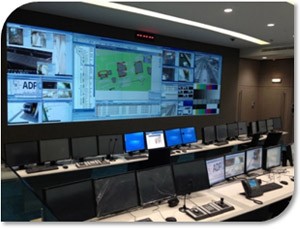 A PSIM Solution:
A PSIM Solution:
- Centralizes information from security, surveillance and management systems
- Combines information from disparate security systems to create a single picture
- Presents a common interface to operators, enabling them to quickly make sense of their environment
- Automate operators response to effectively and efficiently handle events
- Delivers insight into operations, system health and organizational response
What’s a Common Operating Picture (COP)?
A COP is an integrated display of relevant (operational) information. By obtaining an integrated display of operational information that’s visible across the entire enterprise, organizations can greatly enhance their situational awareness. A COP facilitates collaborative viewing, response, planning and enables new levels of productivity and efficiency in critical operations.
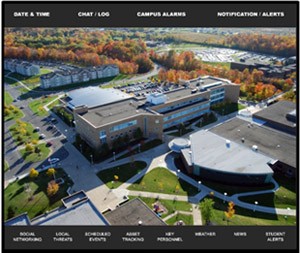 With the use of a COP, Security Administrators can begin to create enhanced situational awareness through collaboration using existing security systems and other informational resources such as social media like “Twitter”. With the use of Geospatial techology, locations of incidents and/or individuals are referenced to a point on the Earth.
With the use of a COP, Security Administrators can begin to create enhanced situational awareness through collaboration using existing security systems and other informational resources such as social media like “Twitter”. With the use of Geospatial techology, locations of incidents and/or individuals are referenced to a point on the Earth.
Example of PSIM Capabilities
- Active Shooter – In the event of an active shooter a PSIM can secure all university doors, email/sms all university personel about the potential danger, call up relevant cameras, make an annoucement over PA/intercom system, and provide University Police with a Standard Operating Procedure
- Student Pushes a Blue Phone Intercom – In the event of a student pushing the blue phone intercom system, a PSIM can geolocate the intercom on a map, call up the closest cameras, and allow the operator to communicate with the student via the intercom.
Summary
Enhanced Situational Awareness is “the combining of new information with existing knowledge in working memory and the development of a composite picture of the situation along with projections of future status and subsequent decisions as to appropriate courses of action to take” (Fracker, 1991b) would lead to a more secure learning enviroment.
Enhanced Situaltional Awareness in the campus scenario can be achieved with the integration of existing security and communication technologies’ inputs into a PSIM and feeding the output of the PSIM into the COP to create an image of the campus security posture without invading the privacy of students.
The goal of this paper is to provide the campus environment, law enforcement, and staff with awareness of cost effective tools that will integrate their existing systems in a way that will increase the security of their facilities and ultimately keep students safe. Additionally, this approach enables the campus environment to add new information to more fully define the security situation on campus and yet to manage this increase information without the need for additional personnel.
]]>

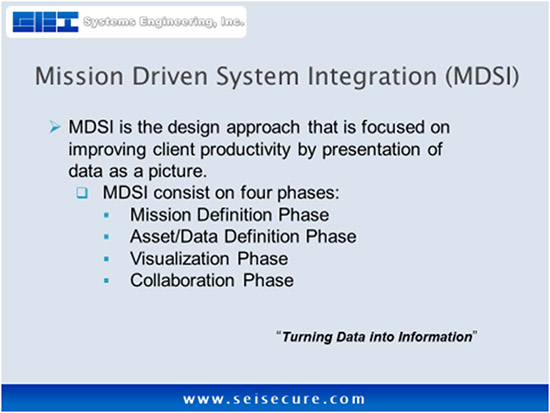
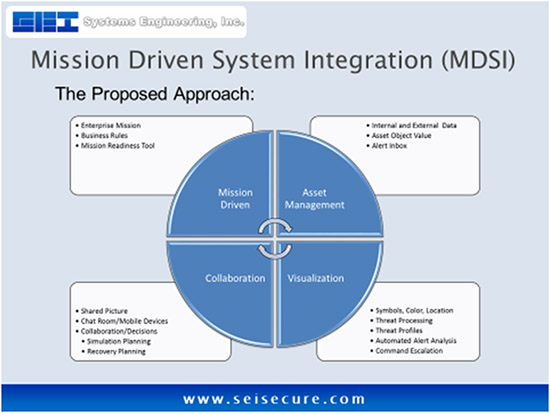
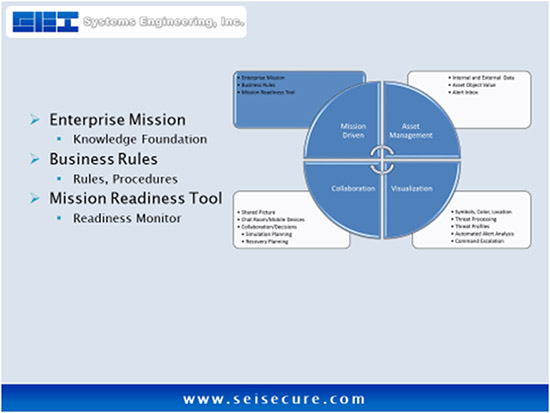
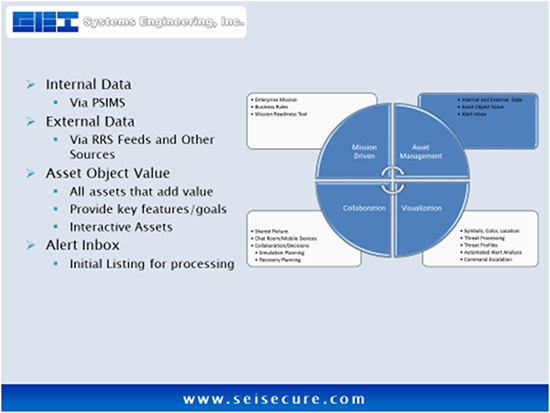
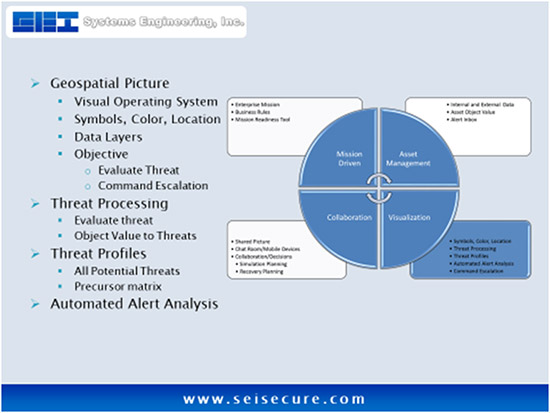
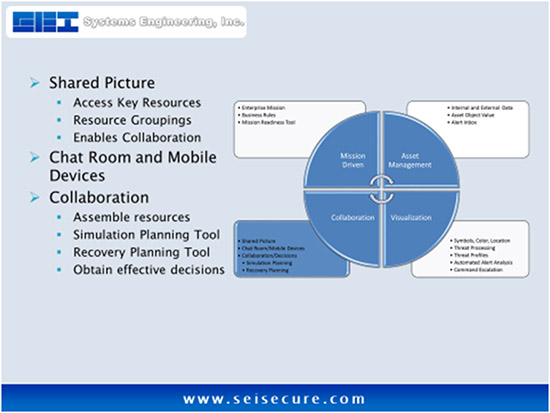
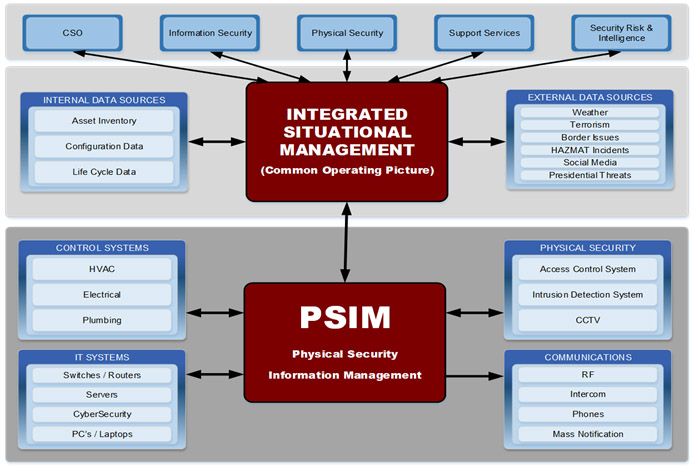
 The statistics clearly show that thousands of crimes take place on college campuses daily. From 2005 to 2007, more than 100 murders, 16,000 assaults and 10,000 forcible sexual assaults were reported on college campuses – amounting to an average of more than nine sexual assaults a day.
The statistics clearly show that thousands of crimes take place on college campuses daily. From 2005 to 2007, more than 100 murders, 16,000 assaults and 10,000 forcible sexual assaults were reported on college campuses – amounting to an average of more than nine sexual assaults a day. A PSIM Solution:
A PSIM Solution: With the use of a COP, Security Administrators can begin to create enhanced situational awareness through collaboration using existing security systems and other informational resources such as social media like “Twitter”. With the use of Geospatial techology, locations of incidents and/or individuals are referenced to a point on the Earth.
With the use of a COP, Security Administrators can begin to create enhanced situational awareness through collaboration using existing security systems and other informational resources such as social media like “Twitter”. With the use of Geospatial techology, locations of incidents and/or individuals are referenced to a point on the Earth.